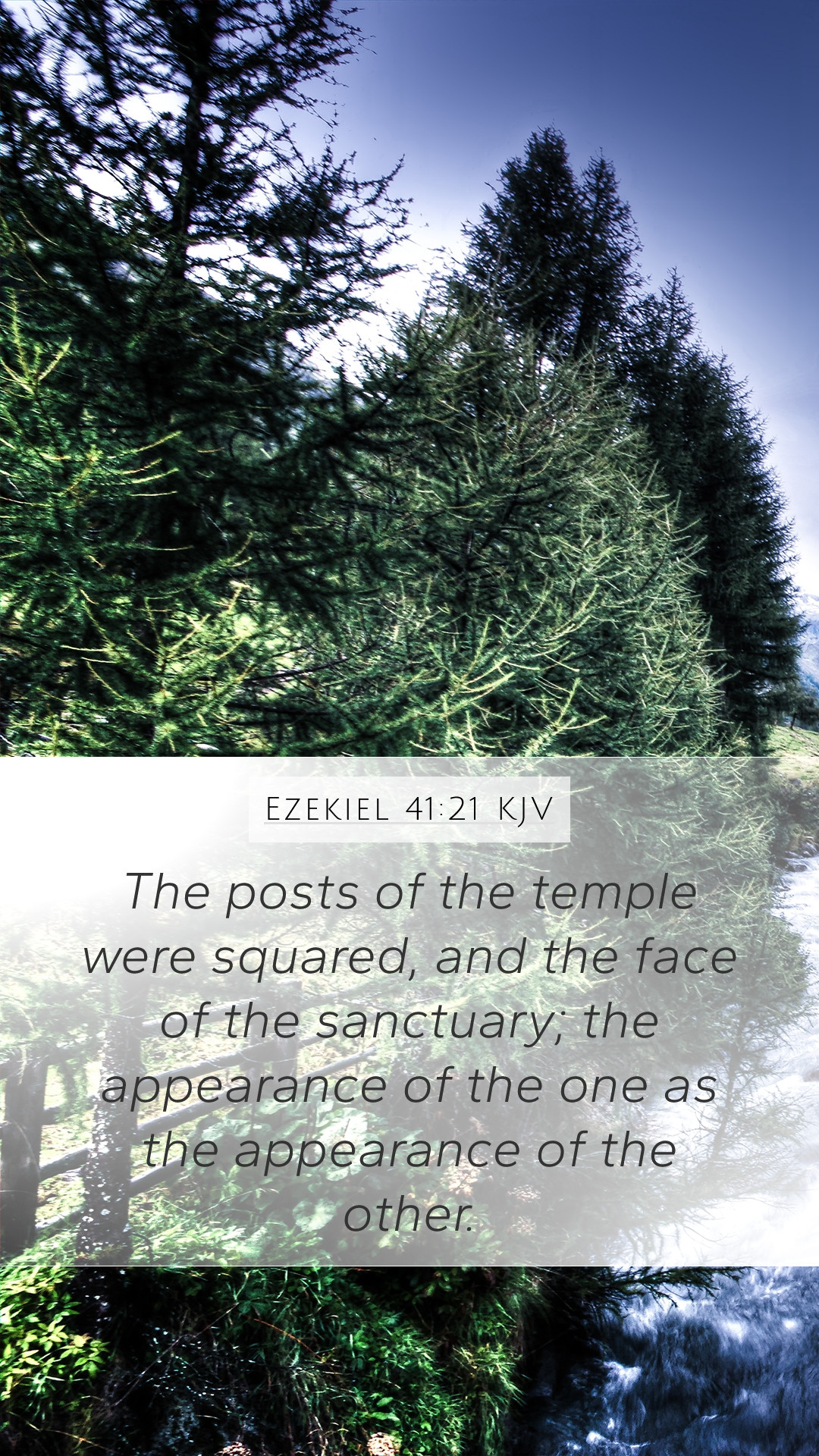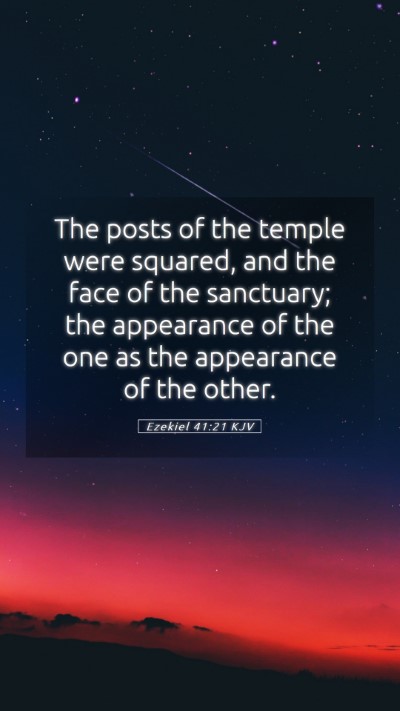Ezekiel 41:21 - Verse Meaning and Commentary
The verse Ezekiel 41:21 states:
"And the pillars of the temple were in the form of square, and the front of the sanctuary was of the same fashion."
Overview
Ezekiel 41:21 presents a detailed description of the temple's architecture, specifically focusing on the structure of the pillars and the sanctuary. This architectural imagery serves not only as a literal description but also carries significant symbolic meaning within the context of the spiritual and communal life of Israel.
The Significance of the Temple
- Symbol of God's Presence: The temple represents God's dwelling among His people, signifying His holiness and the centrality of worship in their lives.
- Architectural Perfection: The description of the pillars and the sanctuary suggests order, stability, and beauty – qualities that reflect God’s character.
- Blueprint for Worship: The temple’s design serves as a model for worship, emphasizing the way in which the Israelites were to approach God.
Commentary Insights
Insights from notable public domain commentators highlight the following:
Matthew Henry
Henry emphasizes that the detailed measurements and descriptions of the temple serve to remind Israel of the importance of reverence towards God. The significance of space is portrayed to indicate that this was not merely a place for congregation, but a sacred space where heaven and earth intersect.
Albert Barnes
Barnes points out that the symmetrical nature of the pillars reflects the order in God’s creation and His governance. He also notes how the construction details signify both a literal and metaphorical foundation for the faith of the Israelites, ensuring they are grounded in their relationship with God.
Adam Clarke
Clarke describes the pillars as representations of strength and stability. The square form of the pillars may imply a connection to virtue and perfection, urging believers to consider how their lives ought to reflect these traits in service to God.
Understanding the Verse in Context
This verse forms part of a larger vision Ezekiel received regarding the future temple. In his account, the temple symbolizes restoration after exile—a place where God’s people could once again encounter His presence. This aligns with themes of hope and divine promise within the prophetic literature.
Practical Application
The architectural features of the temple can serve as a metaphor for believers’ lives today. Just as the temple had specific designs reflecting God’s glory and holiness, Christians are called to live lives that reflect their faith, creating spaces of worship and community in both literal and metaphorical ways.
Cross References
Related Bible verses that enhance the understanding of Ezekiel 41:21 include:
- 1 Kings 6:20-22: A description of the original temple build by Solomon, parallels the sacred nature of the sanctuaries.
- Isaiah 66:1: Highlights that heaven is God's throne and the earth is His footstool, emphasizing His majesty beyond physical structures.
- Revelation 21:22: Describes the New Jerusalem where God’s presence dwells among His people, indicating the ultimate fulfillment of the temple's purpose.
Conclusion
In summary, Ezekiel 41:21 is rich in meaning and provides profound insights into the nature of worship, the importance of God's presence, and the call for God's people to live in a manner that reflects His character. Through the lens of scripture analysis and biblical exegesis, we gain a better understanding of the significance of the temple architecture and its implications for our lives as believers.
For individuals engaging in Bible study groups, online Bible study, or personal study, this verse and its commentary offer profound insights and lessons that can enhance one's understanding of Scripture and its application in daily life.


